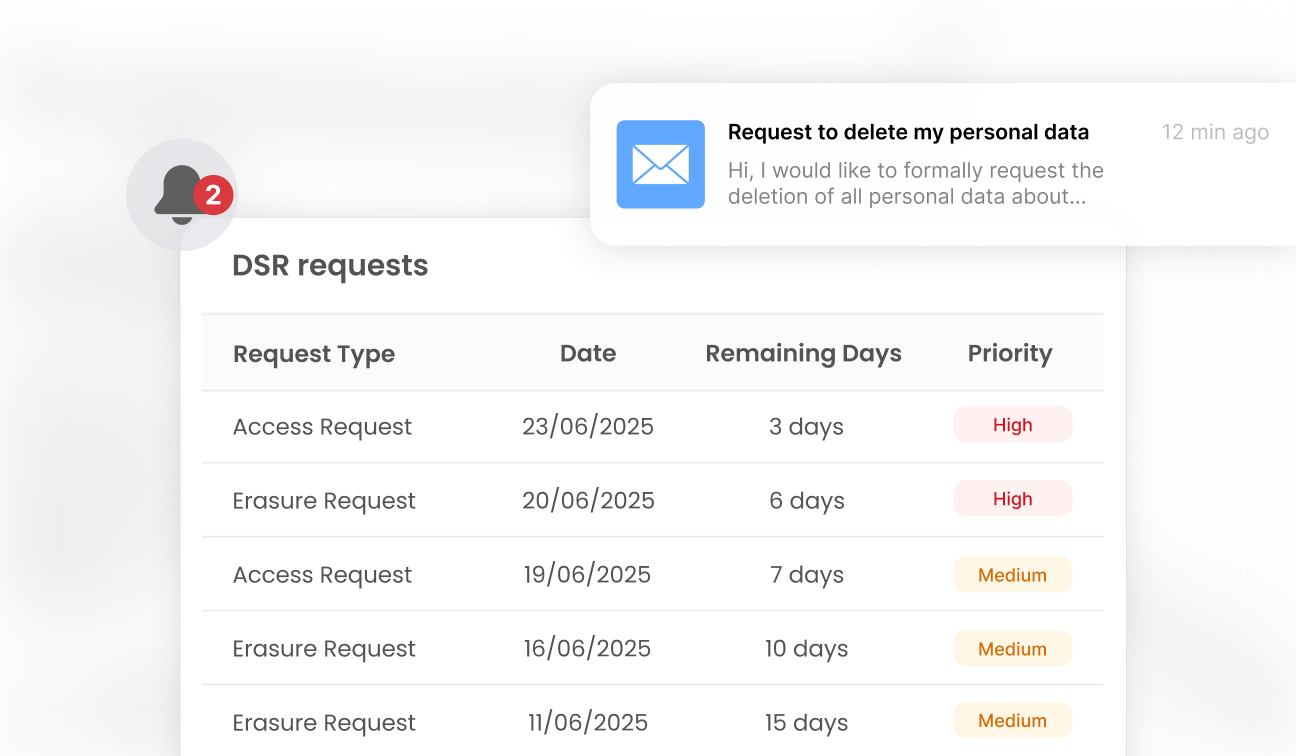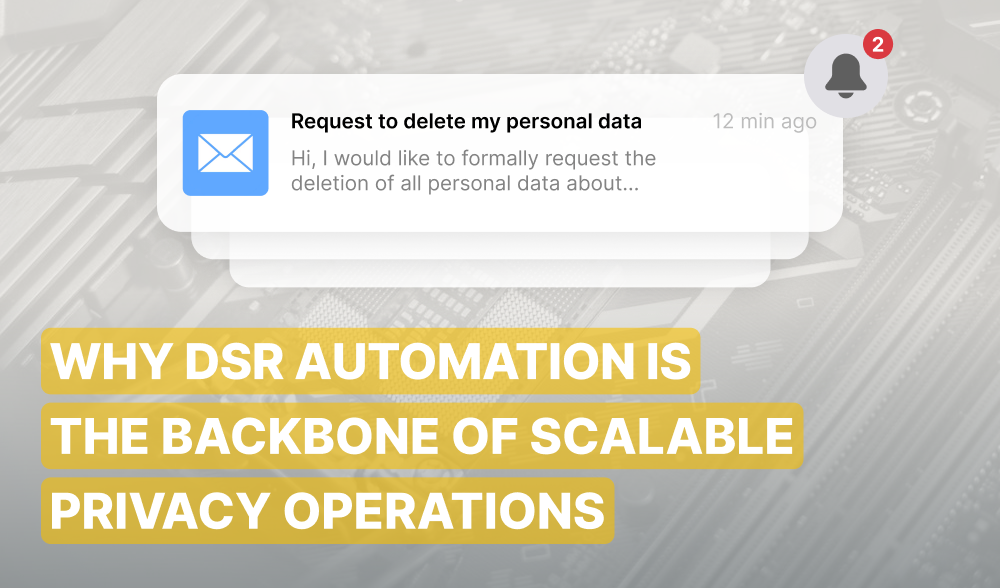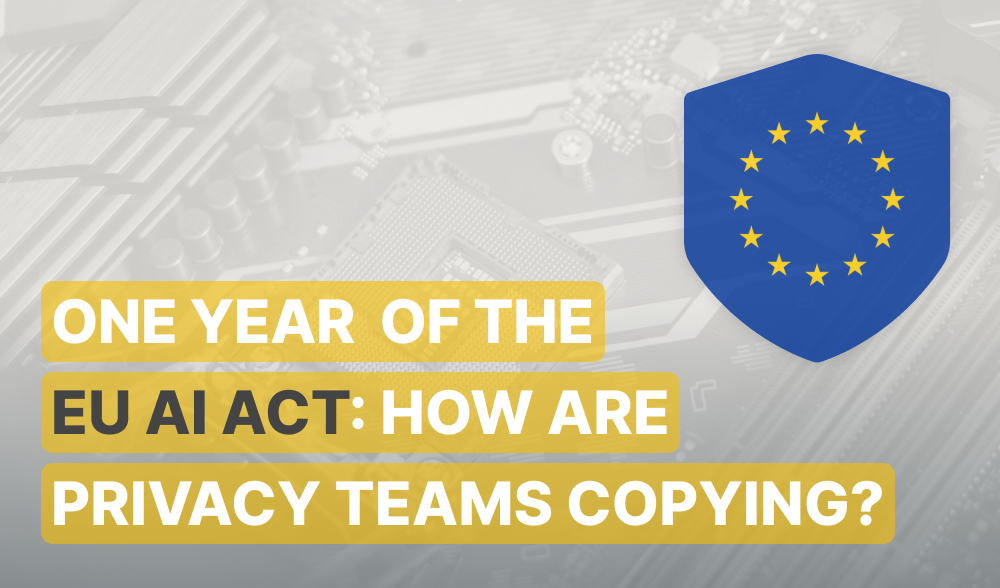Every privacy team cares about efficiency and knows how manual, repetitive tasks drain resources and leave little time for strategic work. But if you really want to assess how operationally mature a privacy program is, look at how it handles Data Subject Rights (DSRs).
Still relying on manual approaches? Manually coordinating across departments? Using a legacy tool that promised automation but still leaves you chasing down data? You’re not alone.
Why DSR Automation is no longer optional
Handling DSRs shouldn’t feel like firefighting, yet that’s the daily reality for many privacy professionals.
We consistently hear the same frustrations:
- Endless manual work with no real relief
- Legacy tools that promised automation but failed to deliver
- Pressure to meet strict regulatory deadlines without error
- The need to deliver fast, transparent, and trustworthy communication to customers
- Managing DSRs across multiple languages and jurisdictions while the business scales
DSRs should be one of the first workflows you review, streamline, and automate. The public-facing areas of your brand are where risk is most visible and DSRs involve direct interaction with data subjects. These requests are not just a legal obligation; they’re also an opportunity to demonstrate transparency and build trust.
With laws like GDPR, CCPA, and LGPD increasing in complexity and enforcement, manual handling of DSRs is becoming unsustainable. And beyond improving operational agility, effective DSR automation can strengthen customer relationships by enabling a faster, more respectful, and consistent way to manage user rights across regions.
However, the day-to-day reality for many privacy teams still looks far from this ideal. Complex requests are prioritised, and the rest of the day is spent shoulder-tapping colleagues: pinging departments, sending follow-ups, and chasing confirmations that data has been deleted or returned.
This kind of manual back-and-forth isn’t just inefficient; it’s risky. Without clear workflows and defined ownership, deadlines are missed, accountability is unclear, and compliance becomes fragile.

Why most privacy solutions still fail to automate DSRs
Let’s be honest: most privacy management platforms promise DSR automation, but when it comes to execution, especially in real-world, complex environments, those promises rarely hold up.
We’ve heard it time and again from privacy professionals:
“We’re still routing requests manually.”
“The system doesn’t support our regions or languages.”
“We can’t track ownership, and everything lives in spreadsheets.”
In fact, over 70% of TrustWorks customers came to us after struggling with platforms where DSR automation simply wasn’t feasible. Requests had to be tracked manually, follow-ups were handled through spreadsheets and emails, and compliance risk increased with every missed deadline.
The challenges are even greater in multilingual, multi-location environments. Teams told us:
- The volume of DSRs was growing rapidly
- Their business operated across multiple countries, languages, and legal frameworks
- Outsourcing the process wasn’t an option; they’d lose control
- Building a custom solution in-house would be too costly and time-consuming
These organisations needed more than feature checklists. They needed a platform that could truly operationalise DSR workflows across languages, jurisdictions, teams, and systems. Without adding friction. That’s where TrustWorks comes in.
How TrustWorks solves the DSR automation gap
TrustWorks was purpose-built to help privacy teams move from manual coordination to structured, scalable automation. Our platform directly addresses the challenges of growing teams operating in complex environments where the cost of inefficiency isn’t just internal, but reputational and regulatory.
Here’s how efficient DSR automation works:
- No-code workflow builder: Our drag-and-drop builder allows privacy teams to configure and automate DSR processes end-to-end—without engineering support. It enables routing, approvals, and integrations across teams and systems, tailored to the complexity of global privacy workflows.
- Multi-channel intake: TrustWorks consolidates DSRs from email, Zendesk, web forms, and more—into a single, centralised view. No request is missed, no matter where it comes from.
- Data subject enrichment: Requests are automatically enriched using available identifiers. For example, if a request comes in via email, TrustWorks can retrieve the subject’s internal customer ID and use that to initiate erasure or other actions across integrated systems.
- Pre-execution checks and notifications: Built-in identity verification, duplicate detection, and real-time notifications reduce operational risk and keep all stakeholders informed throughout the process.
- Data retention scheduling: Teams can configure standard and custom retention rules, ensuring data is deleted in compliance with internal policies and jurisdictional requirements.
- Privacy Center: Our customizable Privacy Center offers a branded, multilingual experience for data subjects. Individuals can submit and track requests in their preferred language—creating transparency and trust, while ensuring compliance with GDPR, LGPD, CCPA, and beyond.
- Tracking and compliance dashboard: From task ownership to audit trails, privacy teams have full visibility into DSR operations through a real-time dashboard. This ensures accountability and simplifies internal reporting and regulatory audits.
💡 See how it works in action
Watch the video below to explore how TrustWorks automates DSR workflows efficiently, accurately, and at scale.
Final thoughts
DSRs aren’t just a compliance obligation. They’re a daily test of your team’s efficiency, your tools’ effectiveness, and your company’s commitment to data transparency.
In fast-growing, globally distributed environments, relying on spreadsheets or outdated tech simply doesn’t cut it anymore. Privacy professionals deserve tools that actually reduce manual burden, not add to it.
With true automation, you don’t just meet regulatory requirements. You free up time, build customer trust, and create privacy operations that scale with your business.
👉 Ready to automate your DSR workflows? Start with a free trial of the TrustWorks Privacy & DSR Automation. Request your free trial here
















